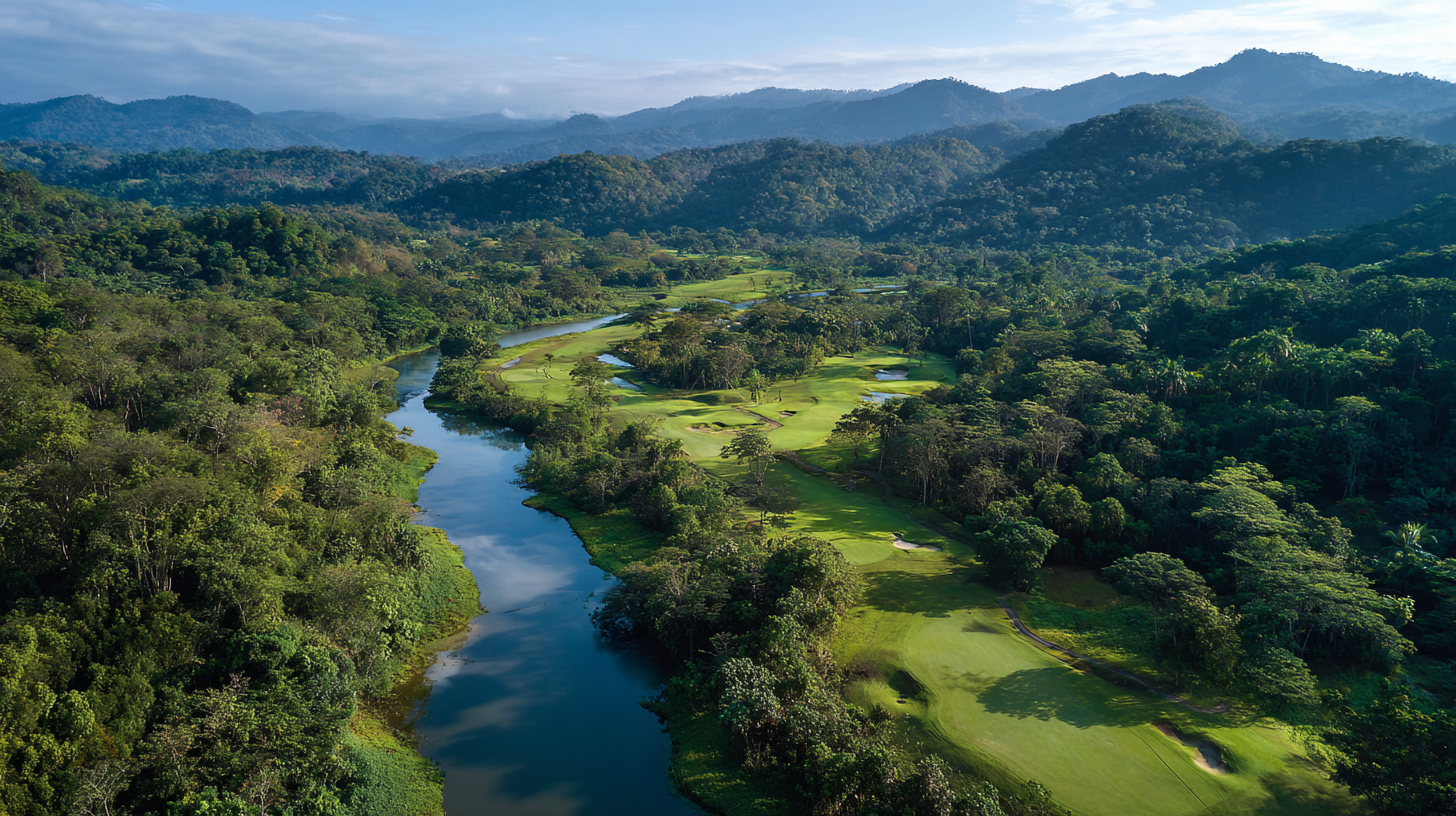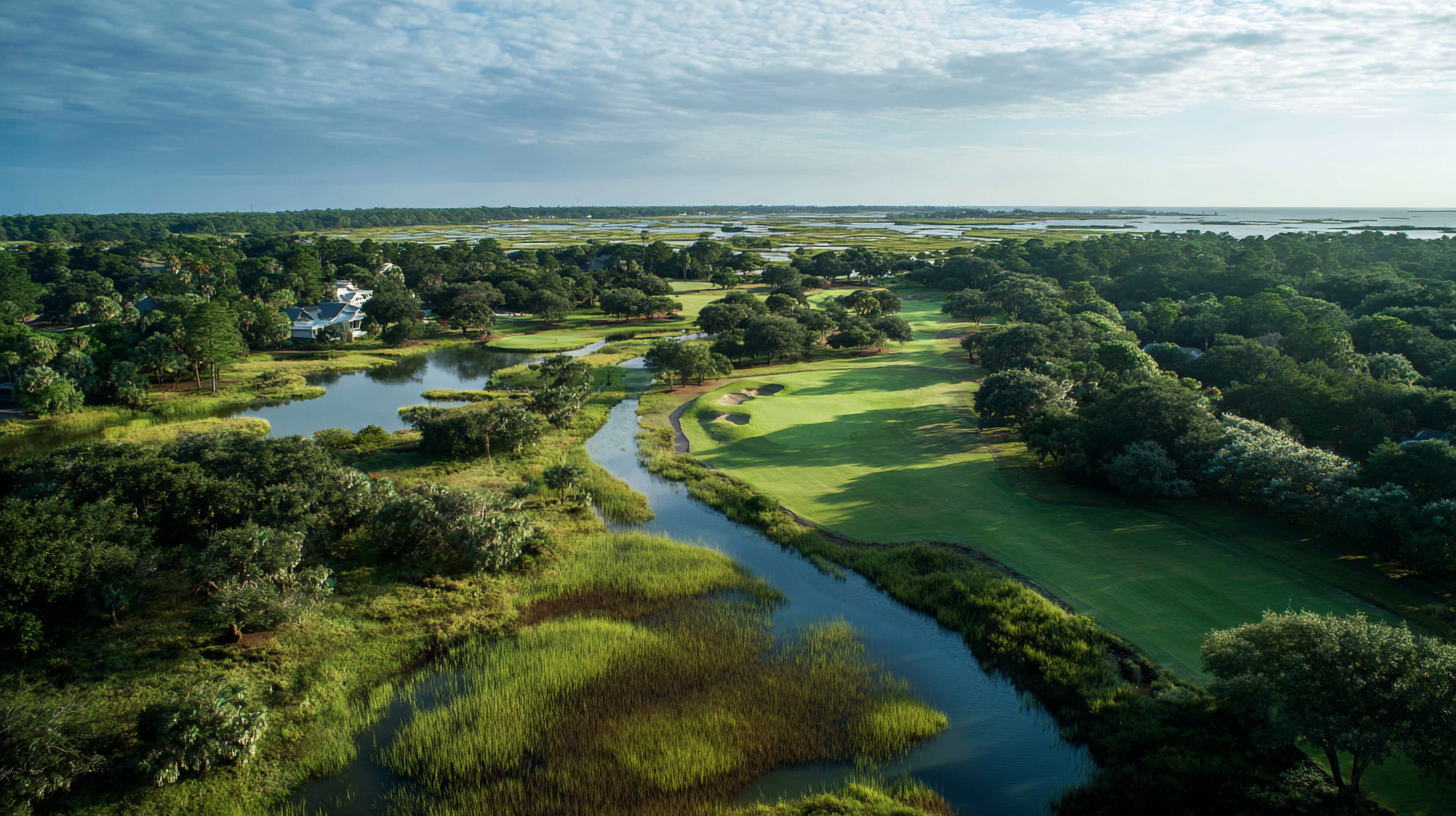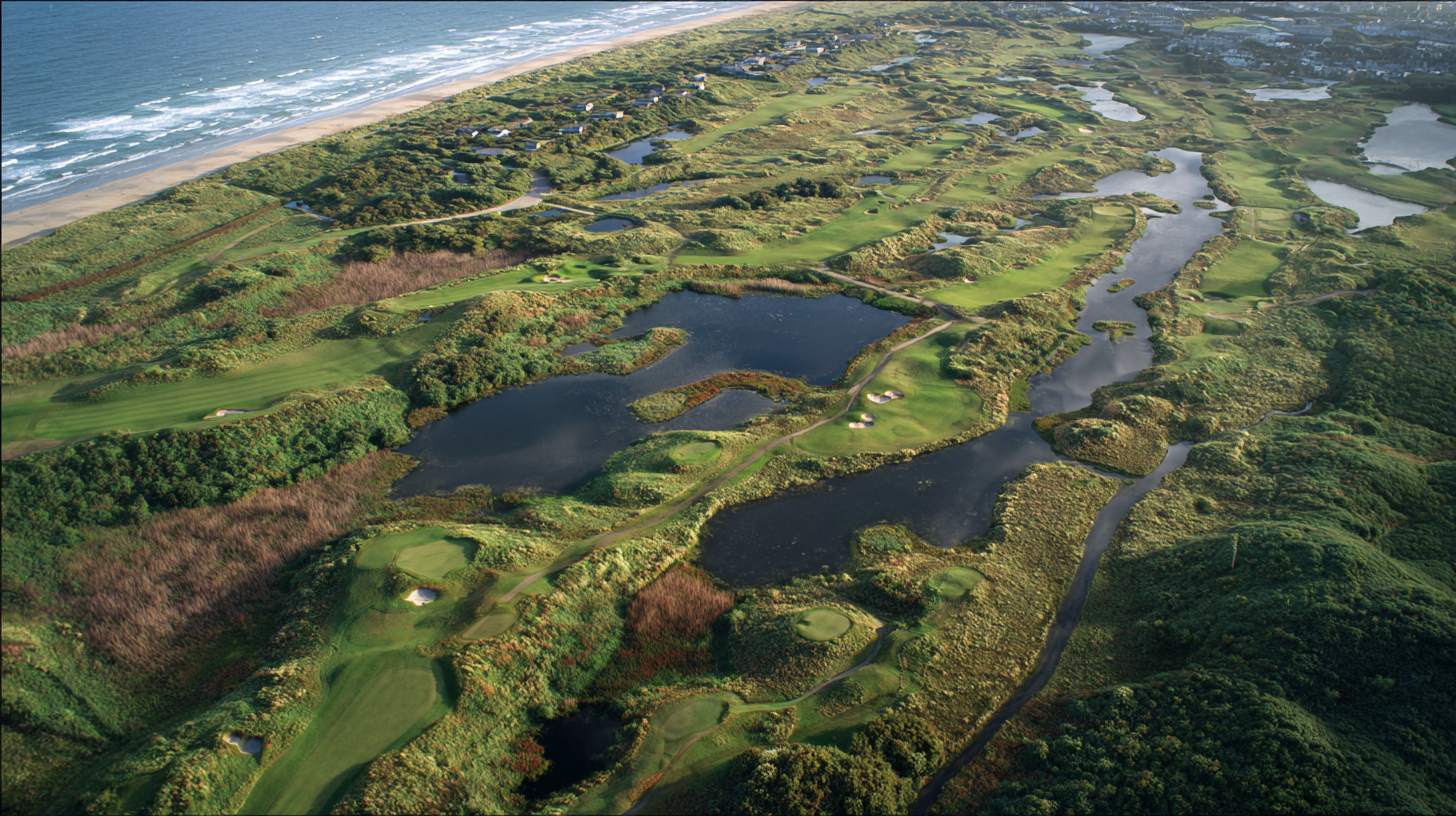Unveiling the Secrets: How Golf Courses Shape Local Ecosystems and Biodiversity
Golf courses, often perceived merely as recreational spaces, play a significant role in shaping local ecosystems and enhancing biodiversity. According to the Golf Environment Organization, there are approximately 39,000 golf courses worldwide, occupying around 2 million acres of land. These landscapes can support a variety of habitats, from wetlands to grasslands, which contribute to the conservation of species and natural resources. A study published by the Journal of Sustainable Golf revealed that well-managed golf courses can host a remarkable diversity of flora and fauna, supporting over 250 different species of birds and numerous pollinators. However, the challenge lies in implementing sustainable practices that balance the recreational use of golf courses with their ecological potential. By understanding how golf courses influence their environments, stakeholders can adopt strategies to enhance biodiversity and promote environmental stewardship, ultimately turning these green spaces into vital components of local ecosystems.

The Role of Golf Courses in Providing Wildlife Habitats and Corridors
Golf courses, often viewed merely as recreational spaces, play a significant role in shaping local ecosystems. These expansive green areas provide unique habitats for a variety of wildlife, acting as sanctuaries where different species can thrive. The carefully maintained landscapes, which include ponds, trees, and diverse vegetation, create microhabitats that support numerous bird species, small mammals, and insects. By incorporating native plants and sustainable practices, golf courses can enhance biodiversity while mitigating the impacts of urbanization.
Moreover, golf courses serve as essential wildlife corridors that facilitate movement and migration among isolated habitats. These corridors help connect fragmented ecosystems, allowing animals to travel safely between areas for foraging, breeding, and shelter. The strategic design of golf courses, with their vast stretches of greenery, can thus counteract the negative effects of habitat loss caused by urban development. When golf course management prioritizes ecological considerations, they can transform these areas into vital components of the local landscape, fostering both biodiversity and ecological balance.
Unveiling the Secrets: The Role of Golf Courses in Supporting Local Ecosystems
This chart illustrates the estimated number of wildlife species supported by golf courses in various regions. Golf courses can serve as important wildlife habitats and corridors, enhancing local biodiversity.
Impact of Golf Course Design on Water Management and Ecological Health
 The design of golf courses plays a crucial role in water management and the overall ecological health of local ecosystems. By integrating advanced water management technologies, golf courses can significantly reduce water usage, employing methods that can conserve up to 30% of water through innovative practices such as integrated forestry. This not only benefits the golf courses themselves but also promotes eco-friendly environments that enhance biodiversity and support local wildlife habitats.
The design of golf courses plays a crucial role in water management and the overall ecological health of local ecosystems. By integrating advanced water management technologies, golf courses can significantly reduce water usage, employing methods that can conserve up to 30% of water through innovative practices such as integrated forestry. This not only benefits the golf courses themselves but also promotes eco-friendly environments that enhance biodiversity and support local wildlife habitats.
Moreover, golf courses are increasingly being recognized for their potential to contribute to environmental resilience. The principles guiding the planning and operation of these courses focus on creating spaces that support urban cooling, stormwater management, and ecological balance. With the trend of rewilding golf courses gaining momentum, many are transforming into vibrant ecosystems that foster greater interaction between nature and community, all while providing recreational spaces that are essential for public health and well-being.
Evaluating Soil Biodiversity in Golf Course Environments: A Case Study
Golf courses are often seen merely as recreational spaces, but they play a critical role in shaping local ecosystems and enhancing biodiversity. A case study on soil biodiversity within golf course environments reveals the complex interactions between turf management practices and soil health. According to the U.S. Golf Association, healthy soil supports a variety of microorganisms, which are essential for nutrient cycling and plant growth. An analysis of soil samples from several golf courses showed that those employing integrated pest management and organic fertilization practices had up to 30% higher microbial diversity compared to those using conventional methods.
Furthermore, a report from the International Turfgrass Society emphasized that well-managed golf courses can serve as green corridors, supporting a variety of wildlife, including birds, insects, and even small mammals. These findings align with research conducted by the Soil Health Institute, which states that diverse soil ecosystems can enhance resilience against pests and diseases, thereby reducing the need for chemical interventions. As a result, golf courses can act as beneficial components of urban landscapes, promoting not only recreational enjoyment but also environmental stewardship by preserving and enhancing local biodiversity.
Sustainable Practices in Golf Course Management: Balancing Recreation and Ecosystem Needs
Sustainable practices in golf course management play a crucial role in balancing recreational activities with the needs of local ecosystems. By implementing environmentally friendly landscaping techniques, golf courses can enhance biodiversity. Native plants can be integrated into course design, providing habitats for local wildlife while minimizing the need for chemical fertilizers and pesticides. This not only preserves the natural beauty of the area but also promotes a healthier ecosystem that supports various species.
Moreover, water conservation is a key focus in sustainable golf course management. Utilizing rainwater harvesting systems and drought-resistant grass species can significantly reduce water consumption. Incorporating natural water features can also create habitats for aquatic life, enhancing the overall ecological health of the golf course. By prioritizing these sustainable practices, golf courses can serve as beneficial landscapes that contribute to local biodiversity while still providing a space for recreation and enjoyment.
Assessing the Carbon Footprint of Golf Courses: Opportunities for Climate Mitigation
Golf courses, often viewed merely as recreational spaces, hold significant potential for climate mitigation due to their carbon footprint dynamics. The extensive landscapes of these courses can act as carbon sinks, capturing and storing carbon dioxide from the atmosphere. However, the net carbon impact depends largely on how the courses are managed. Sustainable practices, such as implementing native vegetation and using organic maintenance methods, can greatly enhance this capability. By reducing chemical inputs and optimizing water usage, golf courses can not only decrease their overall emissions but also promote healthier soil and increased biodiversity.

Moreover, golf courses provide an opportunity for carbon offsetting through thoughtful land management. The integration of wildlife habitats within these landscapes can boost local biodiversity while enhancing carbon storage. Practices such as planting trees and preserving wetlands not only support ecological health but also create natural buffers against climate impacts. This dual benefit—promoting recreational activities while serving as an ecological asset—highlights the essential role golf courses can play in local ecosystems and the broader climate narrative. By embracing these practices, golf courses can transform from simple leisure environments into vital components in the climate action tapestry.
 Newsletter Signup
Newsletter Signup
Monthly Vibe
Upcoming events, promo offers, member exclusives and more.
About The Owners
Golf Fanatics is a Chrysalis Enterprises Company owned by a group of like-minded individuals who share a common passion and affinity for golf, investing in successful Small-Medium-Enterprises, creating rewarding employment opportunities and being good industry participants and corporate citizens.
Contact Us
Explore
Come And Play
Monday
Tuesday
Wednesday
Thursday
Friday
Saturday
Sunday
9 a.m. – 10 p.m.
8 a.m. – 10 p.m.
8 a.m. – 10 p.m.
8 a.m. – 10 p.m.
8 a.m. – 11 p.m.
8 a.m. – 11 p.m.
8 a.m. – 9 p.m.
Copyright © 2025 · Golf Fanatics is a division of Chrysalis Golf Ventures Inc.
7100 15th St SE, Calgary AB
This site is protected by reCAPTCHA and the Google Privacy Policy and Terms of Service apply.






